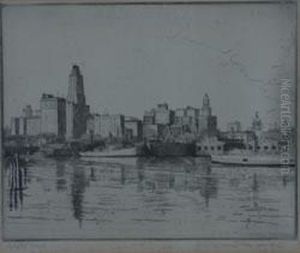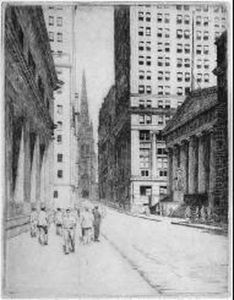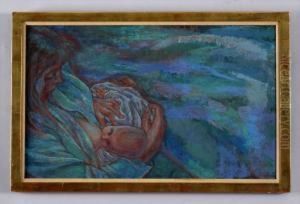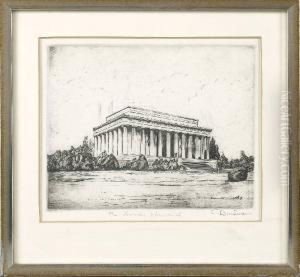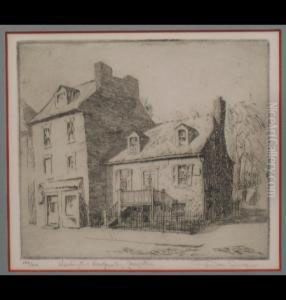Don Swann Paintings
Don Swann was an American etcher and artist, born in 1889 in Baltimore, Maryland. His work primarily focused on landscapes, cityscapes, and architectural subjects, capturing the essence of early to mid-20th century America with a particular emphasis on his native Baltimore and its surroundings. Swann's artistic journey began at a young age, influenced by his environment and the burgeoning art scene in Baltimore during the early 1900s. He pursued formal education in art, studying at the Maryland Institute College of Art, which laid the foundation for his technical skills and artistic sensibilities. Swann's education continued in Europe, where he further honed his skills and was exposed to a wide range of artistic styles and techniques, particularly in etching and printmaking.
Don Swann's contributions to American art are particularly noted for his mastery of etching, a printmaking technique that involves etching a design onto a metal plate with acid. His works are characterized by their detailed and precise lines, capturing the intricate beauty of his subjects with a sense of realism and depth. Swann's etchings often depicted the historical and architectural beauty of Baltimore, including its famous landmarks, harbor scenes, and quaint neighborhoods, as well as scenes from his travels throughout the United States and Europe. His ability to capture the mood and atmosphere of a place made his works highly sought after by collectors and art enthusiasts.
Throughout his career, Don Swann remained active in the art community, participating in numerous exhibitions and contributing to the growth of the arts in Baltimore. He was also involved in various art organizations and served as a mentor to emerging artists. Swann's legacy is preserved through his prints, which continue to be appreciated for their artistic value and historical significance. He passed away in 1954, leaving behind a body of work that continues to be celebrated for its contribution to American etching and printmaking. Don Swann's etchings serve as a valuable record of American landscapes and architecture during a period of significant change and development, reflecting the artist's deep appreciation for the beauty and history of his surroundings.
